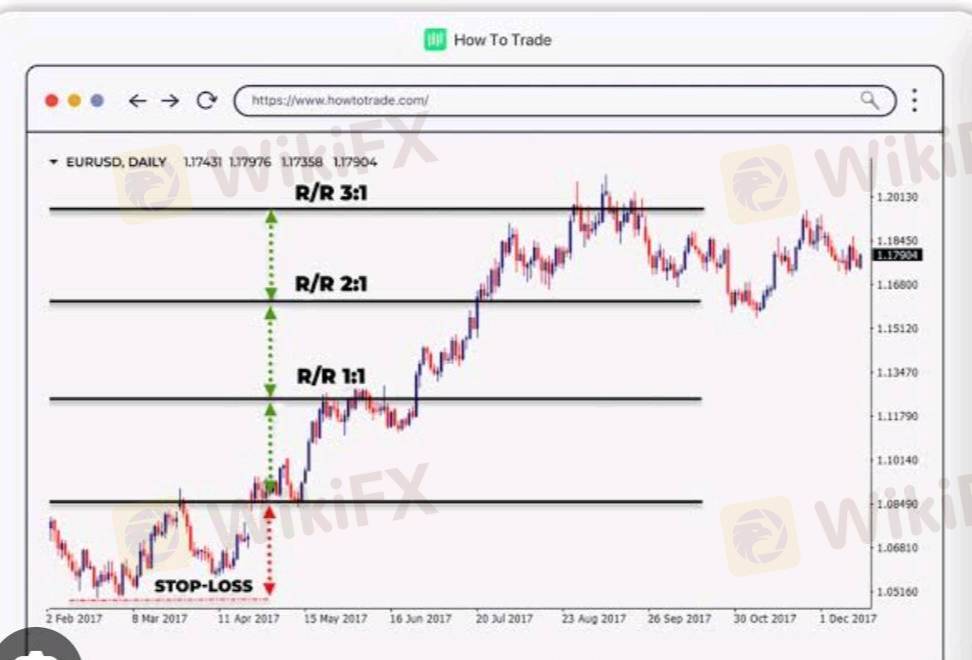
2025-02-06 04:04
IndustriyaFollow a risk reward ratio in forex trading.
#firstdealofthenewyearAKEEL
The risk-reward ratio (R:R) is a critical concept in forex trading, helping traders assess the potential reward for every unit of risk they take. Here's a guide to following an effective risk-reward ratio:
1.Define the Risk-Reward Ratio
The risk is the amount you're willing to lose on a trade.
The reward is the potential profit you're aiming to achieve.
A common ratio is 1:2, meaning for every $1 risked, you aim to make $2.
2.Set Your Stop-Loss and Take-Profit Levels
Use a stop-loss to limit your potential loss.
Set a realistic take-profit target based on market conditions and analysis.
Ensure the distance between your entry point and take-profit level is at least twice the distance to your stop-loss for a 1:2 ratio.
3.Analyze Market Conditions
Identify key support and resistance levels to place your stop-loss and take-profit.
Ensure the potential reward is achievable based on the market's volatility and trend.
4.Avoid Chasing Trades
Do not enter trades where the risk-reward ratio doesn't meet your criteria, even if the trade looks promising.
Be disciplined in rejecting trades that fall below your target ratio.
5.Use Consistent Position Sizing
Never risk more than 1-2% of your trading account on a single trade.
Adjust your lot size based on the stop-loss distance and your risk percentage.
6.Review and Adjust as Needed
Analyze your trading journal to ensure you're consistently following your risk-reward ratio.
Fine-tune your strategy if the ratio is not yielding expected results in specific market conditions.
Examples of Risk-Reward Ratios
1:1 - Minimum acceptable for some strategies but provides little margin for error.
1:2 - Common standard, balancing risk and reward.
1:3 or higher - Preferred for trend-following strategies but may require more patience.
By adhering to a sound risk-reward ratio, you can minimize losses, maximize profits, and maintain long-term profitability in forex trading.
#firstdealofthenewyearAKEEL
Katulad 0
Mky9196
ट्रेडर
Mainit na nilalaman
Pagsusuri ng merkado
Dogecoin cheers coinbase listing as Bitcoin’s range play continues
Pagsusuri ng merkado
Grayscale commits to converting GBTC into Bitcoin ETF:
Pagsusuri ng merkado
Bitcoin's price is not the only number going up
Pagsusuri ng merkado
Theta Price Prediction:
Pagsusuri ng merkado
How to Research Stocks:
Pagsusuri ng merkado
Bitcoin (BTC), Ethereum (ETH) Forecast:
Kategorya ng forum

Plataporma

Eksibisyon

Ahente

pangangalap

EA

Industriya

Merkado

talatuntunan
Follow a risk reward ratio in forex trading.
 Nigeria | 2025-02-06 04:04
Nigeria | 2025-02-06 04:04#firstdealofthenewyearAKEEL
The risk-reward ratio (R:R) is a critical concept in forex trading, helping traders assess the potential reward for every unit of risk they take. Here's a guide to following an effective risk-reward ratio:
1.Define the Risk-Reward Ratio
The risk is the amount you're willing to lose on a trade.
The reward is the potential profit you're aiming to achieve.
A common ratio is 1:2, meaning for every $1 risked, you aim to make $2.
2.Set Your Stop-Loss and Take-Profit Levels
Use a stop-loss to limit your potential loss.
Set a realistic take-profit target based on market conditions and analysis.
Ensure the distance between your entry point and take-profit level is at least twice the distance to your stop-loss for a 1:2 ratio.
3.Analyze Market Conditions
Identify key support and resistance levels to place your stop-loss and take-profit.
Ensure the potential reward is achievable based on the market's volatility and trend.
4.Avoid Chasing Trades
Do not enter trades where the risk-reward ratio doesn't meet your criteria, even if the trade looks promising.
Be disciplined in rejecting trades that fall below your target ratio.
5.Use Consistent Position Sizing
Never risk more than 1-2% of your trading account on a single trade.
Adjust your lot size based on the stop-loss distance and your risk percentage.
6.Review and Adjust as Needed
Analyze your trading journal to ensure you're consistently following your risk-reward ratio.
Fine-tune your strategy if the ratio is not yielding expected results in specific market conditions.
Examples of Risk-Reward Ratios
1:1 - Minimum acceptable for some strategies but provides little margin for error.
1:2 - Common standard, balancing risk and reward.
1:3 or higher - Preferred for trend-following strategies but may require more patience.
By adhering to a sound risk-reward ratio, you can minimize losses, maximize profits, and maintain long-term profitability in forex trading.
#firstdealofthenewyearAKEEL
Katulad 0
Gusto kong magkomento din
Ipasa
0Mga komento

Wala pang komento. Gawin ang una.

Ipasa
Wala pang komento. Gawin ang una.